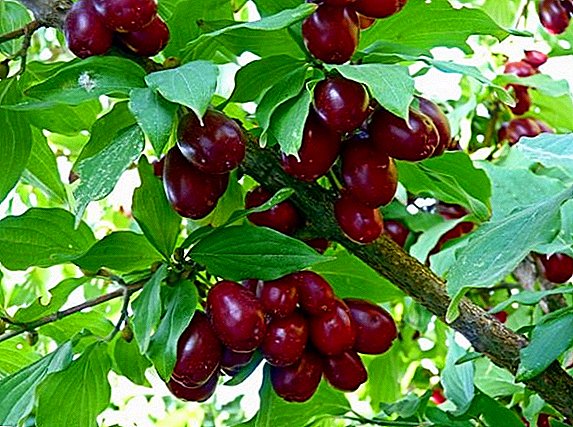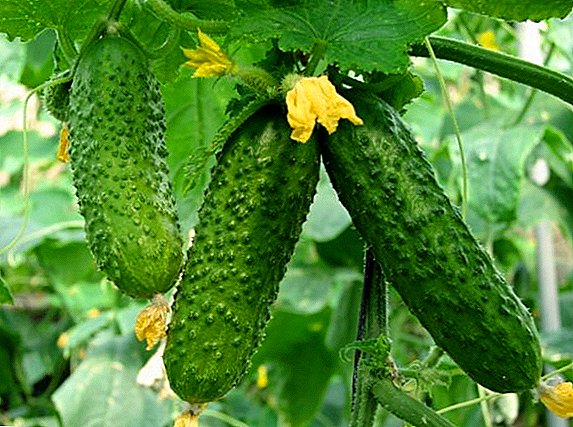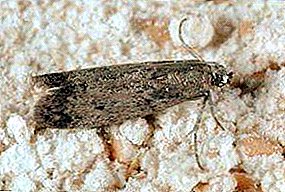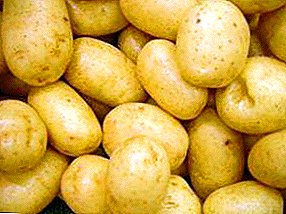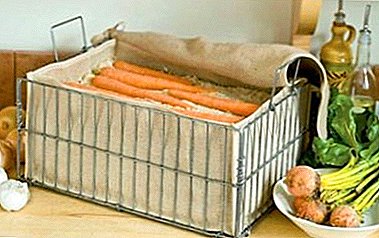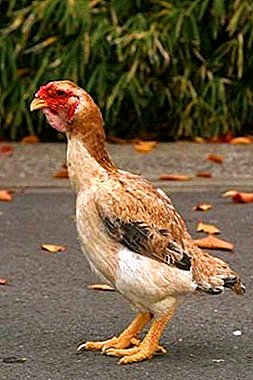
Cockfights originated a long time ago in India, but even now they have not lost their relevance.
In many countries of the world and even in Russia, this sport continues to flourish. And the majority of domestic breeders are interested in Japanese breeds of fighting hens, such as Yamato.
The fighting breed of Yamato chickens was bred by Japanese breeders. They tried to get a small, but very hardy bird with an unpleasant grumpy character.
This breed was specially bred for the entertainment of the Japanese emperors, who have long been known for their interest in cockfighting.
Modern Yamato chickens have fully preserved all the breed signs. They can easily beat larger and stronger rivals only at the expense of their endurance and aggressiveness.
Breed description Yamato
Yamato chickens have a small body size and straight posture. At the same time, they are characterized by weak plumage, the presence of a typical earring and a fleshy face. The lower tail feathers of hens and roosters are bent upwards.
There are two types of colors: wheat and wild. Roosters with wheat color are characterized by golden feathers, and hens - red-brown. As for the wild color, the hens have golden feathers, and the roosters are brown or red.
Breed signs of the rooster
 The Yamato Rooster has a wide and erect torso. It tapers slightly to the tail, which makes the shape of the body look like an egg.
The Yamato Rooster has a wide and erect torso. It tapers slightly to the tail, which makes the shape of the body look like an egg.
His shoulders come forward well. On the shoulders of a rooster is the average length of the neck, which has a slight bend. There is a short plumage on the neck, which is missing from the shoulders.
The cock chest is very wide and rounded.. At the same time, massive brisket is clearly visible. The back of the cock is short, slightly arched and slightly narrowed towards the tail.
On the lower back, the plumage is either absent or it is very scarce. The wings of the rooster are small, flat. The shoulder blades are strongly protruding, the bare bones of the wings are visible.
The tail of the bird is short, so during the fight it does not interfere. It is slightly down, and the braids have a slight bend. The stomach of Yamato is underdeveloped, so it is almost invisible.
The head of the cock is small and short. Eyebrows are visible on it, giving the bird a more formidable look. The face of the cock is fleshy. With aging it becomes more wrinkled.
Comb completely red. It is characterized by a pod form, which ends at the nape of the bird. Earrings are very short. Have the same color as the comb. As for the ears, they are scarlet. Old birds have wrinkles.
 Chicken Fireol has a slightly unusual appearance, due to which some lovers attribute them to the decorative breed.
Chicken Fireol has a slightly unusual appearance, due to which some lovers attribute them to the decorative breed.
If you find fleas in chickens, urgently read what is written here: //selo.guru/ptitsa/bolezni-ptitsa/nasekomye/klopy-i-blohi.html.
The beak of this fighting breed is short but strong, which allows it to inflict crushing blows on the enemy. The eyes are usually pearly in color, but in young animals they may have an orange color.
Ankles can be short or medium, but in both cases they are quite muscular. Legs are also short or medium with short massive fingers.
Appearance of chicken
Chickens are completely similar to the rooster, excluding basic sex differences. Chickens have distinct earrings, as well as tail feathers pointing upwards. In size, a chicken may be slightly smaller than a rooster.
Features
 The Yamato fight chickens are aggressive-minded poultry.
The Yamato fight chickens are aggressive-minded poultry.
They can easily peck any large hen, therefore it is necessary to keep this breed separate from other birds. In addition, cocks and hens of this breed can often engage in fights between themselves because of food or a better perch, so they are best kept in separate cages.
When breeding this breed, breeders often face breeding problems. During the mating hens and roosters engage in fierce fights, making this process almost impossible. This must be taken into account before buying a bird.
Also, this breed of chickens is characterized by very low egg production. It also makes it difficult to reproduce the herd. Some breeders have to buy eggs for incubation from other poultry lovers.
Due to the large number of deficiencies, this breed of chickens is suitable only for real fans of cock fighting, who know their business and are ready to watch the bird responsibly.
Content and cultivation
 Immediately it should be noted that the breeding of this breed brings some difficulties for the owner of the bird.
Immediately it should be noted that the breeding of this breed brings some difficulties for the owner of the bird.
The egg production of this breed leaves much to be desired. There are also problems with the fertilization of eggs. In total, a small fraction of all eggs laid has an embryo in itself that may not grow into a chicken if the Yamato chicken does not properly incubate the clutch.
The aggressive nature of this breed of chickens does not allow keeping them together with other birds. That is why the breeder will have to create a separate poultry house with cages so that Yamato does not peck at each other during the holidays. Ideal for this breed of chickens is not suitable a very large room, which remains dry even in winter and after the rain.
Breeders who want to get roosters with a particularly fleshy body structure should pay great attention to the nutrition of the birds. It should receive a sufficiently large amount of vegetable and animal protein.
As for the breeding of young animals, it is better to do this in early spring, so that the chickens have time to grow up to the first exhibition inspection.
As a rule, hens of the Yamato breed reach sexual maturity only at the age of two years, so their basic breed characteristics do not become apparent immediately, which can confuse inexperienced breeders.
Specifications
Chickens breed Yamato can reach a weight of 1.3-1.5 kg, and roosters - up to 1.7 kg. These chickens are very bad. Their average egg production is rarely more than 50 eggs per year.
At the same time, the egg weight allowed for incubation should be 35 g. The color of the egg shell can be either cream or brown.
Poultry farms in Russia
 Breeding of this breed of chickens is mainly done by private breeders. Their contacts can be found on specialized sites with ads.
Breeding of this breed of chickens is mainly done by private breeders. Their contacts can be found on specialized sites with ads.
As a rule, such poultry farms are not very large, so their owners do not create separate websites. You can search for contacts of private farmers on the site avito.ru.
When buying you should be careful, as often private sellers can not guarantee the purity of the breed. In the future, this may affect the external signs of Yamato.
Analogs
Instead of the Yamato breed, you can breed Shamo dwarf chickens. This breed was also bred by Japanese breeders.
It is distinguished by its small size, excellent endurance and dexterity, which allows it to conquer even larger and stronger opponents. Not only private farms but also large poultry farms are engaged in breeding Shamo, so the formation of the parent flock will not be a problem.
Conclusion
Japanese chickens Yamato - a fighting breed of chickens. They were bred for many decades to participate in battles with other breeds of hens of the same direction.
Breeders managed to create a small, but strong and durable bird, capable of several beaks to virtually destroy any enemy. In order for such birds to run in battles, you need to carry out additional training, which makes a fighting bird out of the ordinary chicken.


